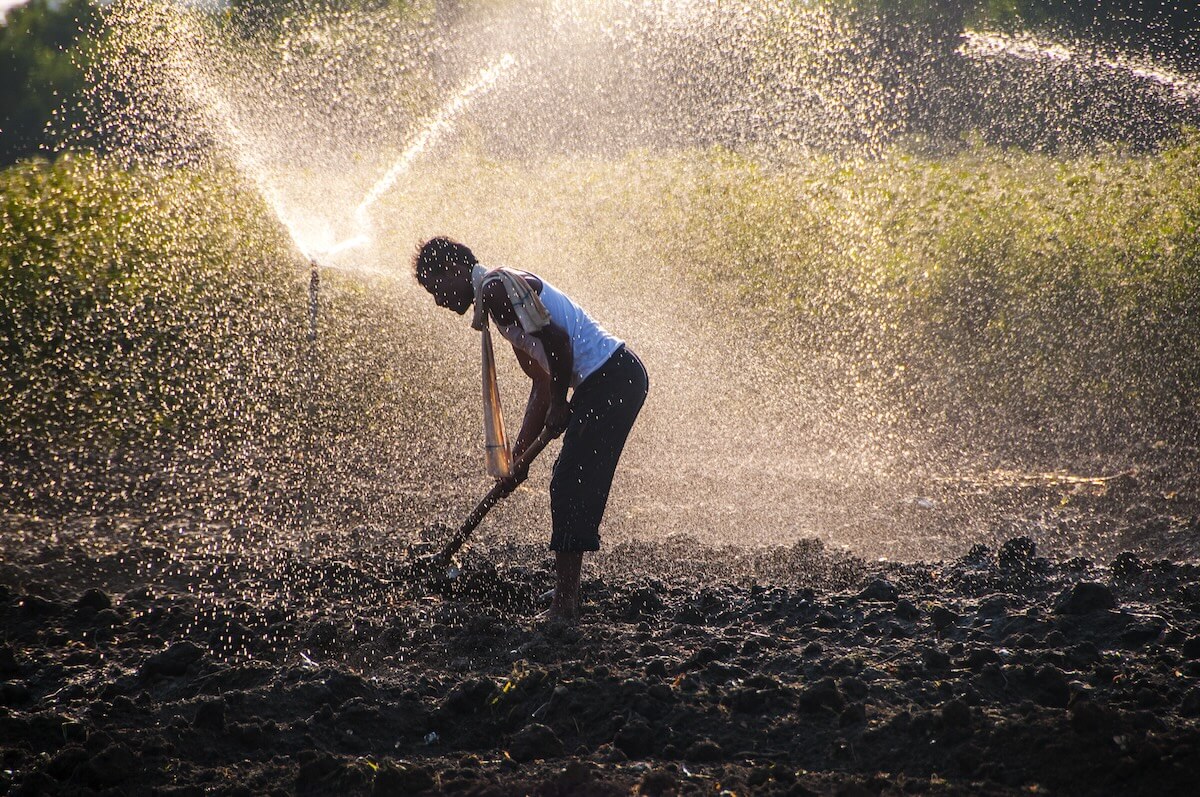In one of Puerto Rico’s poorest neighborhoods, you can find what economists might call a “green shoot.”
The plan for Oasis, a six-acre, $43 million campus in San Juan’s Villa Prades public housing community includes a school, a health clinic, and a training center for entrepreneurship and job skills. With its construction, dreams of moving families out of poverty have taken hold.
The site is being developed with some careful financial engineering, including the stacking of philanthropic dollars, New Markets Tax Credits, low-income investment funds and a bridge loan.
As the team on the ground, we pulled these funds together as part of our mission to bring capital to the community, with a hope that we, along with other like-minded investors, could build as many as 75 similar hubs to enable economic growth in Puerto Rico.
We know that Puerto Rico struggles with access to capital and unstable power grids. But what is just as critical—and often overlooked—is its “human infrastructure.” This campus is designed to elevate and activate the people who have the power to lift the economy. It is an investment in removing obstacles for striving families, by providing human supports: job placement, healthcare, childcare, schooling and training.
Oasis is a concrete demonstration of the potential of blended finance and impact investing to help Puerto Rico find its economic footing following a national bankruptcy and several years of enduring disasters from hurricanes to earthquakes, and Covid. Dollars provided, often first by donors or loans, then can be positioned to unlock critical federal aid and incentives. As families are raised out of poverty, more economic power is activated, and risk is lowered, drawing increased investment.
At NEXA: Jobs Summit this week in San Juan, my organization, Platform for Social Impact, is convening forward-looking investors and other leaders to explore impact investing opportunities in Puerto Rico’s reconstruction. Among those joining us in San Juan: USDA’s Max Trujilo, Edgar Gomez Cintron of Center for Habitat Reconstruction, Joan Larrea of Convergence and Natasha Müller of NM Impact, JFF’s Kristina Francis and Gayle Peterson of PFC Social Impact Advisors, and Cristina Shapiro of the UNICEF Bridge Fund.
Puerto Rico’s window
This is our moment. The indicators are strong: Puerto Rico is experiencing a historically low unemployment rate, at 5.7 percent in January of 2024, compared to an average of 14.2 percent between 1976 and 2023. The Economic Activity Index—developed by the Puerto Rico Economic Development Bank, comprising nonagricultural wage employment, cement sales, gasoline consumption and electricity generation—has shown growth for three years in a row. And there has also been remarkable growth in new business creation.
The opportunities for impact investment in Puerto Rico, and returns, are abundant, and can be de-risked by federal aid and infrastructure funding that has been moving through to projects and social support. Some $52.8 billion still remains to be disbursed from aid for hurricanes Maria and Irma, aid for the 2019 and 2020 earthquakes, and Covid. In addition, billions from funding from the Bipartisan Infrastructure Law and other as well as other grants are flowing in.
Yet, the demographic trends are challenging, with nearly 60 percent of children living in poverty, and an aging population. The island needs impact investment in everything from healthcare, which can be reimbursed (albeit at lower rates than stateside) by Medicaid and Medicare plans, to charter schools, which have their own promising economic opportunity as a relatively new concept on the island. Another example: the electric grid is still unreliable and expensive, leaving the door open for leapfrog projects in everything from residential solar to micro-grid investments.
The investment vehicles that can be made accessible in Puerto Rico cover a broad spectrum. They range from the loans and other financial services that Community Development Financial Institutions provide, designed to serve low-income communities. In other cases, healthcare investments might be a fit for impact investors or even private equity.
Yet, the deals are not often turnkey. Commonly, capital cannot be absorbed directly, but requires financial engineering to ensure assets are pooled and deployed in ways that will fill various critical needs. Such capabilities are taken for granted in some parts of the world, but are far less prevalent in places like Puerto Rico.
Better still is when risk can be reduced by deploying investment alongside aid. Our experience is that each dollar invested unlocks more potential. In the case of Oasis, philanthropic funding allowed the project to secure $25 million in New Market Tax Credits. The credits in turn helped Oasis unlock a series of federal loans and grants. The fully raised fund allowed a syndicate of low-income lenders to step in to bridge the gap on closing (note: the financing is in the final stages so entities can’t be disclosed).
The services provided at the Oasis campus will create a platform that will improve the impact velocity of every dollar invested in the area in the future.
From my post on site in Puerto Rico, I see three critical areas worthy of consideration by impact investors:
Childcare: Vital to economic mobility for families
Childcare can be both an obstacle and an opportunity for economic growth. In Puerto Rico, it’s an investable opportunity. Take Head Start as an example. The Boys and Girls Club in Puerto Rico proved that the model can be taken private; the organization now runs six Head Starts in the municipality of San Juan. Given that a private entity now has a track record of maintaining, running, and operating Head Start programs effectively, this opportunity could become extensible to impact investors to provide capital.
Put simply, the numbers work. And the opportunity is large. Imagine hundreds of thousands of kids in need of early childhood care and after-school support. It also relieves pressure on families, who then can participate in the job market. In Puerto Rico, there is a low employment participation rate. Looking deeper into the numbers: In 2021, 62% of children in Puerto Rico lived in single-parent households, according to the Puerto Rico Children Vulnerability Index.
This is why we have a charter school, Vimenti, as a key element of our Oasis hub. Quality programs for children unlock economic activity everywhere, but especially when families are struggling to elevate themselves out of poverty. Vimenti has a two-generation model: It focuses on providing quality education for children as well as providing opportunities for skills-based workforce training for families to access high-quality jobs.
Healthcare: An aging population creates a big market opportunity
Puerto Rico has tremendous gaps in its healthcare coverage. But here’s the opportunity: There is an aging population, which is increasingly covered by Medicare Advantage plans. Even though such plans pay less than they do in the U.S., they still deliver at a rate that can underpin a robust business model.
There is demand for all aspects of elder care – ranging from in-home, chronic, and hospice care to expansion of hospitals and development of clinics.
Financial structures run the spectrum. There could be doctor-led, doctor-owned initiatives, which can help to slow the exodus of M.D.’s from Puerto Rico. (Estimates are that some 8,000 doctors have ceased practicing in the past 13 years in Puerto Rico. That’s 65%of all doctors.) There are also opportunities to roll up or expand clinics that already exist.
At our Oasis hub, we have plans with our healthcare partner Vidalus—which is wholly owned by PSI— for a for-profit healthcare clinic, which will serve up to 2,000 clients. It will be open 6 days a week, within walking distance of 76,000 families who live below the poverty line. It will offer everything from emergency care to regular checkups and labs.
Energy: Leapfrogging the grid
Energy in Puerto Rico is both expensive and unpredictable. The grid was famously fragile during the Hurricane Maria disaster. But even with all of that attention and the funding that followed, power delivery is still a strain.
But again, the problem creates the opportunity.
Power costs as much as 25 cents per kilowatt hour in Puerto Rico. And Puerto Rico has a mandate to move to 100 percent renewable energy sources by 2050. So there’s a tremendous arbitrage opportunity in converting to solar. What solar power investor stateside gets to compete with prices that high? What if we invest to create the opportunity to build out residential solar, and bring the cost down to 2 cents per kilowatt hour? That becomes an incentive where we can charge the difference on the market rate by private solar companies, 12 cents, and give families a 50 percent discount on their current bill, and still make 6x the production cost. We can then reinvest to build more solar and microgrids owned and operated by the community. This is what Casa Pueblo has been doing, to great effect.
Even better, imagine where we can sell that power across the Caribbean. This is ambitious, but it’s not a fever dream. An undersea cable is being proposed now between Puerto Rico and the Dominican Republic.
Impact investors know the most exciting opportunities live at this intersection of problem and profit, which can immediately be reinvested to accelerate solutions. We want to connect with forward-thinking investors who are committed to doing good while doing well. Realizing the vision requires some finesse and some on-the-ground knowledge. Here’s a way to get started: Join us at our Impact Investing summit next week in San Juan. (Email us at [email protected] and we will send you an invite.) Or follow us on LinkedIn, or here on ImpactAlpha.
Welcome to the future of Puerto Rico.
Ramphis Castro is chief strategy officer and head of investments at Platform for Social Impact.











